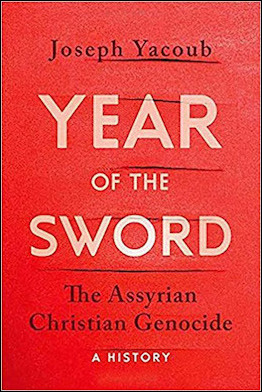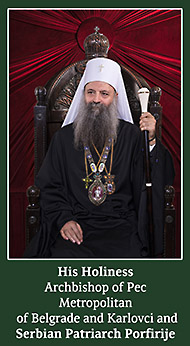Year of the Sword: The Assyrian Christian Genocide, a History
 by Joseph Yacoub
by Joseph Yacoub
Oxford: Oxford University Press, 2016.
Reviewed by Raymond Ibrahim
This important contribution to genocide studies documents how the world’s oldest Christian communities—variously referred to as Chaldeans, Syriacs, and Arameans, but best known as Assyrians—were, along with the Armenians, “victims of the [Ottoman] plan for exterminating Christianity, root and branch,” to quote Lord Bryce in 1920. In fact, as half of the Assyrian population was massacred—going from 600,000 to 300,000 in 1915-18—relative to their numbers, no other Christian group, including the Armenians, suffered as much under the Ottomans.
Yacoub, emeritus professor at the Catholic University of Lyon, offers copious documentation and reports from reliable eyewitnesses, state actors, and relief agencies that recount countless atrocities against the Assyrians—massacres, rapes, death marches, and the destruction of some 250 churches. Most disturbing are the detailed eyewitness accounts that go above facts and figures (such as the sadistic eye-gouging of Assyrians or the gang rape of their young children on the altars of their churches).
While acknowledging that the Assyrians were “annihilated by the murderous madness of Ottoman power, driven by a hideous form of unbridled nationalism,” for Yacoub, the “policy of ethnic cleansing was stirred up by pan-Islamism and religious fanaticism. Christians were considered infidels (kafir). The call to Jihad, decreed on 29 November 1914 and instigated and orchestrated for political ends, was part of the plan.” Accordingly, unexpected actors such as the Kurds, who had their own reasons to oppose anything decreed by Turks, “were accomplices in the massacres, and participated in looting for ideological reasons (the Christians were infidels).”
While focusing on the mass murders that began in 1915—”the year of the sword” to the Assyrians—Yacoub makes clear that such events were not aberrant. Instead, they are part of a continuum that stretches back to the seventh-century Muslim conquest of Mesopotamia and that continues to this day under the guise of the Islamic State (ISIS) and other Middle East actors.
Indeed, many of the Assyrian Christians who have been and continue to be persecuted by ISIS are the grandchildren and great-grandchildren of those massacred by the Ottomans and their minions. As Yacoub—whose own family suffered massacres and deportations—puts it, perhaps the greatest lesson is that “there is no shortage of similarities between 1915 and 2015.”
Note: A shorter version of this review appeared in the Middle East Quarterly.
Source: OCP

